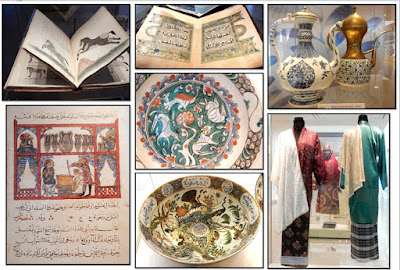 |
| Celebrating Independence |
When Frank Swettenham arrived at the Klang River in 1872, he found a village inhabited by Chinese even though there was already a Malay
 |
| Frank Swettenham |
Kuala Lumpur has many places of worship catering to the multi-religious
 |
| Top L to R: At the caves, Murugan, Deity, Deity group Bottom L to R: Deity groups, Monkey, Peacocks |
One of the reason folks came to the KL area was for the tin mining. This is one of the oldest industries in Malaya, beginning in about 1820 when the Chinese immigrants settled in Perak and started tin mines. The
 |
| L to R: Pewter designing, Worker and Owner, Teapot |
Another piece of art that is woven into everyday use is batik cloth. As
 |
| Batik painter |
Although I had a great visit in KL, there are still many
things left for me to see and do. For information about my rating system, see Reading the
Reviews.
Where we ate:
 |
| Four Carrots |
 |
| Top L to R: Menu, Beef and rice, Noodles Bottom L to R: Char Kway Teow, Bananas, Stew |
Songket Restaurant (29, Jalan Yap Kwan Seng, Kampung Baru, 50450
 |
| Top L to R: Menu, Green rice Bottom L to R: Shrimp, Ribs |
Tosca in the DTH (348 Jalan Tun Razak, Kuala Lumpur, 50400, Malaysia, +60-3-21727272) was a surprisingly good Italian restaurant. I
 |
| Top L to R: Menu, Bruschetta Bottom L to R: Lamb, Carbonara |
What we did:
 |
| Four Carrots |
 |
| Top L to R: Horse book, Koran, Rosewater Ewers Center: Rabbit plate Bottom L to R: Pharmacological book, Bowl, Clothing |
 |
| Monkey God |
No comments:
Post a Comment